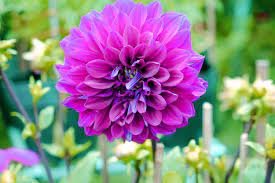**Growing and Caring for Medicinal Chrysanthemum Flowers**

Medicinal chrysanthemum (Chrysanthemum spp.) is not only valued for its therapeutic properties but also cherished for its beauty in gardens and landscapes. Cultivating and caring for medicinal chrysanthemum flowers requires attention to specific growing conditions and maintenance practices. In this detailed guide, we explore the step-by-step process of growing and caring for medicinal chrysanthemums, from planting to maintenance and beyond.
**1. Selecting Chrysanthemum Varieties**
Before diving into cultivation, it’s essential to choose the right chrysanthemum varieties suited for medicinal purposes and local growing conditions:
– **Chrysanthemum indicum:** This species is commonly used in traditional Chinese medicine for its anti-inflammatory and antioxidant properties. It has smaller flowers and is more compact in growth.
– **Chrysanthemum morifolium:** Also known as florist’s chrysanthemum, this species is popular for its showy flowers and is often cultivated for ornamental and medicinal purposes. It comes in various colors and flower forms.
– **Other Species and Hybrids:** Explore different chrysanthemum species and hybrids suitable for your climate and gardening preferences. Look for varieties known for their medicinal properties and adaptability to local conditions.
**2. Growing Conditions**
Medicinal chrysanthemums thrive under specific growing conditions that promote healthy growth and flower production:
– **Sunlight:** Choose a location with full sun exposure (6-8 hours of direct sunlight daily) for optimal blooming. Chrysanthemums can tolerate some shade but bloom best in full sun.
– **Soil:** Plant chrysanthemums in well-drained, fertile soil enriched with organic matter. The soil should be slightly acidic to neutral (pH 6.0-7.0) for optimal nutrient uptake.
– **Temperature:** Chrysanthemums prefer cool to moderate temperatures. They grow best in climates with mild summers and cool autumns, as excessive heat can affect flower quality.
**3. Planting Chrysanthemums**
Follow these steps to plant medicinal chrysanthemum flowers in your garden or containers:
– **Timing:** Plant chrysanthemums in early spring after the last frost date or in late summer/early fall for autumn blooming.
– **Spacing:** Space chrysanthemum plants 12-18 inches (30-45 cm) apart to allow for adequate air circulation and prevent overcrowding.
– **Digging Holes:** Dig holes slightly larger than the root ball of each chrysanthemum plant. Amend the soil with compost or aged manure for added nutrients.
– **Planting Depth:** Place each chrysanthemum plant in the hole at the same depth as it was in the nursery container. Backfill with soil and gently firm around the base.
– **Watering:** Water newly planted chrysanthemums thoroughly to settle the soil around the roots. Keep the soil evenly moist during the establishment period.
**4. Care and Maintenance**
To ensure healthy growth and abundant flowering, provide proper care and maintenance to your medicinal chrysanthemum plants:
– **Watering:** Water chrysanthemums regularly, especially during dry spells or hot weather. Avoid overhead watering to prevent fungal diseases. Water at the base of the plants in the morning.
– **Fertilization:** Feed chrysanthemum plants with a balanced fertilizer (10-10-10 or similar) every 4-6 weeks during the growing season. Use a fertilizer formulated for flowering plants to promote blooming.
– **Deadheading:** Remove faded flowers promptly to encourage continuous blooming and prevent seed formation. Pinch back spent blooms to promote new growth and compactness.
– **Support:** Stake tall chrysanthemum varieties to prevent them from bending or breaking under the weight of flowers. Use bamboo stakes or plant supports for added stability.
– **Mulching:** Apply a layer of organic mulch (e.g., shredded bark, straw, or compost) around chrysanthemum plants to conserve moisture, suppress weeds, and maintain soil temperature.
**5. Pest and Disease Management**
Keep an eye out for common pests and diseases that can affect chrysanthemum plants and take preventive measures:
– **Pests:** Watch for aphids, spider mites, and caterpillars. Use insecticidal soap or neem oil to control infestations, or introduce beneficial insects like ladybugs.
– **Diseases:** Prevent fungal diseases such as powdery mildew and leaf spot by spacing plants properly, providing good air circulation, and avoiding overhead watering.
**6. Overwintering**
In regions with cold winters, protect chrysanthemum plants from frost damage by overwintering them:
– **Mulching:** Apply a thick layer of mulch around chrysanthemum plants in late fall to insulate roots and protect against temperature fluctuations.
– **Cutting Back:** After the first frost, cut back chrysanthemum plants to a few inches above ground level. Clean up debris and mulch lightly to prevent heaving.
– **Dividing:** Every 2-3 years, divide mature chrysanthemum plants in early spring to rejuvenate growth and maintain vigor. Dig up the clumps, separate into smaller divisions, and replant.
**Conclusion**
Growing and caring for medicinal chrysanthemum flowers is a rewarding endeavor that combines beauty with therapeutic value. By selecting suitable varieties, providing optimal growing conditions, and implementing proper care techniques, you can cultivate healthy chrysanthemum plants that bloom profusely and contribute to your garden’s charm. Embrace the art of chrysanthemum cultivation and enjoy the benefits of these versatile and resilient flowering plants in your landscape or container gardens.
**Part 2: Cultivating and Caring for Medicinal Chrysanthemum Flowers**
Growing and caring for medicinal chrysanthemum flowers requires attention to detail and specific practices to ensure optimal health, growth, and flower production. In this section, we delve deeper into the techniques and considerations involved in cultivating and maintaining these valuable plants.
**7. Watering and Irrigation**
Proper watering is crucial for the health and vigor of medicinal chrysanthemum plants. Follow these guidelines to maintain optimal soil moisture levels:
– **Frequency:** Water chrysanthemums regularly, especially during periods of active growth and flowering. Aim to keep the soil consistently moist but not waterlogged.
– **Watering Technique:** Water at the base of the plants using a watering can or drip irrigation to deliver water directly to the roots. Avoid overhead watering, which can promote fungal diseases.
– **Moisture Monitoring:** Check the soil moisture regularly by inserting your finger into the soil. Water when the top inch (2.5 cm) feels dry, adjusting frequency based on weather conditions.
– **Mulching:** Apply a layer of organic mulch around chrysanthemum plants to retain soil moisture and reduce evaporation. Mulching also helps suppress weeds and maintain a consistent soil temperature.
**8. Fertilization and Nutrient Management**
To support healthy growth and prolific flowering, chrysanthemum plants benefit from regular feeding with balanced fertilizers:
– **Fertilizer Type:** Use a balanced fertilizer formulated for flowering plants, such as 10-10-10 or similar. Alternatively, choose a fertilizer specifically designed for chrysanthemums.
– **Application Schedule:** Apply fertilizer every 4-6 weeks during the growing season, starting in early spring and continuing through late summer. Follow the manufacturer’s instructions for dosage and application method.
– **Avoid Overfertilizing:** Avoid excessive nitrogen, which can promote lush foliage at the expense of flowers. Monitor plant growth and adjust fertilization accordingly.
**9. Pruning and Deadheading**
Pruning and deadheading are essential maintenance tasks that promote compact growth and continuous blooming in chrysanthemum plants:
– **Deadheading:** Remove spent flowers promptly to encourage the production of new blooms. Pinch or snip off faded flowers just above a leaf node or lateral bud.
– **Pruning:** Pinch back young chrysanthemum plants in spring to encourage bushiness and branching. Use clean, sharp pruners to remove terminal buds, promoting lateral growth.
– **Cutting Back:** After the first flush of blooms, cut back chrysanthemum plants by one-third to promote a second round of flowering in late summer or fall.
**10. Pest and Disease Control**
Keep an eye out for common pests and diseases that can affect chrysanthemum plants and take appropriate measures for prevention and control:
– **Pests:** Monitor for aphids, spider mites, and caterpillars, especially during warm weather. Use insecticidal soap, neem oil, or natural predators to manage pest infestations.
– **Diseases:** Watch for fungal diseases such as powdery mildew, gray mold (Botrytis), and leaf spot. Improve air circulation, avoid overhead watering, and apply fungicidal treatments if necessary.
– **Preventive Measures:** Maintain good garden hygiene by removing debris, fallen leaves, and weeds that can harbor pests and diseases. Rotate plantings to prevent the buildup of pathogens in the soil.
**11. Winter Care and Overwintering**
In regions with cold winters, protect chrysanthemum plants from frost damage and prepare them for winter dormancy:
– **Mulching:** Apply a thick layer of mulch (e.g., straw, shredded leaves) around chrysanthemum plants in late fall to insulate roots and protect against freezing temperatures.
– **Cutting Back:** After the first frost, cut back chrysanthemum plants to a few inches above ground level. Clean up debris and mulch lightly to prevent heaving.
– **Division:** Every 2-3 years, divide mature chrysanthemum plants in early spring to rejuvenate growth and prevent overcrowding. Dig up the clumps, separate into smaller divisions, and replant.
**12. Harvesting and Utilization**
Harvest chrysanthemum flowers for medicinal purposes at the peak of bloom, when their bioactive compounds are most concentrated:
– **Timing:** Harvest flowers early in the morning, after dew has evaporated but before the heat of the day. Choose flowers that are fully open but not wilted.
– **Processing:** Remove flower heads and dry them in a well-ventilated area away from direct sunlight. Store dried flowers in airtight containers away from moisture and light.
– **Utilization:** Use dried chrysanthemum flowers to make herbal teas, tinctures, or extracts for various medicinal applications, including immune support, inflammation reduction, and relaxation.
**Conclusion**
Cultivating and caring for medicinal chrysanthemum flowers is a rewarding journey that requires dedication and knowledge of plant care practices. By providing optimal growing conditions, practicing regular maintenance, and implementing pest and disease control measures, you can cultivate healthy chrysanthemum plants that thrive and contribute to your garden’s beauty and utility. Embrace the art of chrysanthemum cultivation and enjoy the benefits of these versatile and resilient flowering plants in your home garden or medicinal herb plot.


